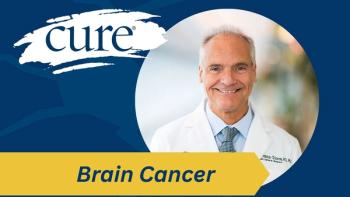
Individual Approach May Help to Determine Second-Line Treatment Options in Liver Cancer
While advances have been made in the treatment landscape of hepatocellular carcinoma, researchers are now looking into the optimal sequence for which patients should be treated.
While advances have been made in the treatment landscape of
Until 2018, patients with HCC only had one front-line treatment option: Nexavar (sorafenib). “Compared with a decade ago, when we only had one Food and Drug Administration (FDA)-approved drug, the outlook for patients with HCC is very promising,” explained Dr. Gazala N. Khan, who is a gastrointestinal medical oncologist in the Henry Ford Health System.
Since Nexavar was approved in 2007, no positive trials were announced until 2017 — not without effort, that is. “It was not for a lack of trials; there have been many different phase 3 trials looking at multikinase inhibitors, but these trials have been mostly negative,” explained Khan.
However, in August 2018, the FDA approved Lenvima (lenvatinib) for the front-line treatment of patients with unresectable HCC, based on results from the large, randomized phase 3 REFLECT trial.
The trial, which was designed to evaluate noninferiority of Lenvima versus Nexavar, showed a median overall survival of 13.6 months in the Lenvima arm compared with 12.3 months in the Nexavar arm. Additionally, the median progression-free survival (time from treatment to disease worsening) was 7.4 months in those who received Lenvima versus 3.7 months in patients treated with Nexavar. Between the two agents, lenvatinib appeared to be better tolerated, added Khan.
“I would say lenvatinib is as efficacious as sorafenib in all of the parameters,” she said.
In addition to Nexavar and Lenvima, the phase 3 CELESTIAL trial evaluated Cabometyx (cabozantinib) compared with placebo in the second-line setting among patients who progressed on Nexavar — leading to its own FDA approval.
“The drug did appear to be associated with a statistically significant improvement in overall survival,” added Khan. “It was also fairly well tolerated in this patient population.”
Beyond these tyrosine kinase inhibitors, the monoclonal antibody
“The recent advent of these new agents speaks to their improved efficacy and our capability to design newer molecules that act on these specific targets,” she added. “This success is also based, in part, on a better understanding of the disease biology.”
With this conundrum, Khan recommends for a more personalized approach moving forward in the treatment landscape of patients with advanced HCC. “It's not clear how to best sequence these drugs. Personally, I would base this decision on the individual patient's profile and characteristics until more data become available.”
This article is adapted from an article that appeared on




